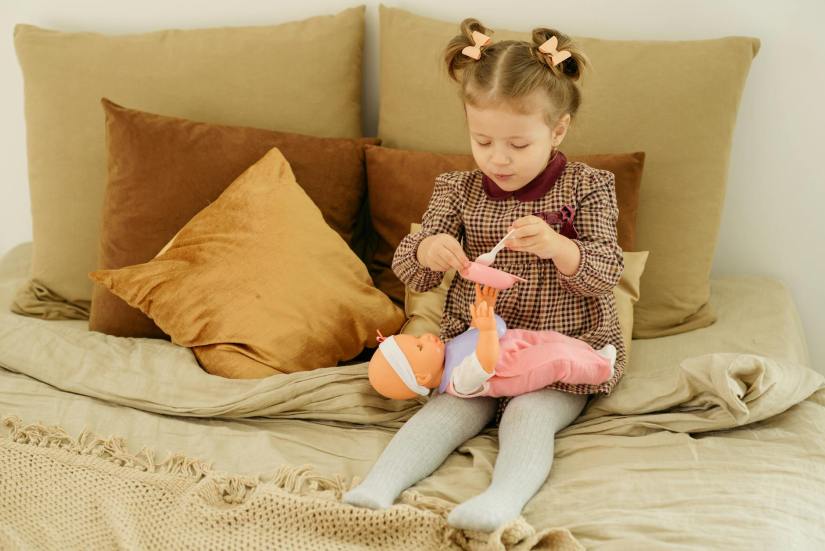With Thanksgiving just around the corner, there’s still time to weave in some engaging Thanksgiving activities for kids that build on speech and language skills. Here are five updated ideas to bring the holiday spirit into your sessions while supporting language development.
Warning: smiles are contagious!
Fun Thanksgiving Activities for Kids: Creative Playdough Crafts
First up is my Play dough appetizer tray. I’ve seen many play dough trays, like Pre-K Pages‘, so I created my own version with personalized contents. I utilized my craft supplies and bought decorative leaves and alphabet letters to enhance the activity.
We have worked on requesting, commenting, and following directions while making unique turkeys. Some used Popsicle sticks for legs, others used pipe cleaners and decorative leaves to create feathers for their crafts. The Popsicle sticks have also come in handy for cutting the dough. Hands down, this activity has been highly preferred among many (including caregivers.)
Sorting Pie: A Fun Thanksgiving Activity for Kids
Next, is my sorting pie from Learning Resources. What better way to prepare for Thanksgiving than to sort some fruit into a pie? You could even grab some mini pumpkins at a local dollar store to make a pumpkin pie!
The game includes two sets of tongs for choice making and multiple choice boards for matching colors, objects, or numbers. My clients aged 2-7 enjoyed requesting more, naming colors, commenting, and matching objects to pictures using this super, cute pie.
Fun Thanksgiving Activities for Kids: Colorful Tablecloth
Another hit during Thanksgiving was my paper tablecloth. I scored this find while looking for Halloween clearance items at Target, so I grabbed a few to use across a couple of years. My younger clients have colored while listening to auditory bombardment lists containing target speech sounds, while my older clients have played tic-tac-toe or earned a chance to color as a reward for completing work.
Here are a couple more ways I’ve used the tablecloth in speech and language sessions:
-
Thanksgiving Word Webs
- Have your clients create word webs related to Thanksgiving. They can write or draw pictures of foods, animals, or objects associated with the holiday. For example, the word turkey could have words like feathers, farm, and gobble branching from it.
- Speech Focus: Use this activity to target initial sounds like /t/ in “turkey,” /f/ in “farm,” or /g/ in “gobble.”
- Language Focus: Encourage clients to describe the items in their word web using adjectives (e.g., “The turkey is big” or “The pie is delicious.”).
2. Thanksgiving Scenes for Storytelling
-
- Draw or color a Thanksgiving scene on the tablecloth, such as a family at a dinner table, a farm, or a harvest field. Use this to encourage storytelling, helping clients sequence events and build narratives.
- Speech Focus: Have clients focus on sentence structure and practice articulation by retelling what is happening in the scene.
- Language Focus: Guide the children in using past-tense verbs (e.g., “The family ate turkey” or “The farmer picked pumpkins”) while narrating their story.
These simple activities provide fun and interactive ways to work on both speech and language goals, making the tablecloth a versatile tool for your sessions!
Fun Thanksgiving Activities for Kids: Interactive Books
Years ago, I purchased a collection of interactive Thanksgiving books from Jenna at Speech Room News. This collection contains books that target action words, commenting about likes and dislikes, and other thematic vocabulary. I have used these colorful books to engage busy toddlers, assist in sentence completion tasks, and promote answering questions about action words using speech generating devices.
Thanksgiving-Themed Pretend Play: Farm House
What’s a speech and language session without some pretend play time? I paired my farm house with Fisher Price Thanksgiving pieces to talk about sitting at the table, eating, and bringing food from the farm to the dinner table. You can pick up some shredded, yellow paper to use as hay for the barn and easily dispose of it between clients. Below are some additional details to enhance speech and language sessions:
| Task | Materials Needed | Speech Targets | Language Examples |
| Setting the Thanksgiving Table | Farmhouse toy, Fisher Price Thanksgiving pieces, toy plates and cups | /t/, /b/, /s/ sounds | “Put the turkey on the table.” “Give the plate to the pig.” |
| Bringing Food from the Farm | Toy animals, toy food, shredded yellow paper (hay), toy truck | Action words: bring, carry, load | “The cow carries the food to the table.” “Let’s load the truck with hay.” |
| Feeding the Farm Animals | Toy farm animals, toy food (popcorn kernels, pumpkins, etc.), toy bucket | Vocabulary: food, animals, farm | “The horse is eating corn.” “Feed the cow some pumpkins.” |
| Harvesting Crops for Dinner | Shredded yellow paper (hay), toy vegetables (corn, pumpkins), toy baskets | Sequence: first, next, last | “First, we pick the corn. Then, we take it to the kitchen.” |
| Driving the Tractor to the Farm | Toy tractor, farm animals, toy food | /k/ and /t/ sounds | “Drive the tractor to the kitchen.” “The cat is sitting on the tractor.” |
| Talking About the Feast | Farmhouse toy, toy food, Thanksgiving toy pieces | Phrases: in, on, next to | “The turkey is on the table.” “The chair is next to the pig.” |
| Describing the Thanksgiving Meal | Toy food, farmhouse toy table, plates and utensils | Adjectives: hot, cold, big, small | “The pumpkin pie is big.” “The hot turkey is ready to eat.” |
By incorporating these fun Thanksgiving activities for kids into your therapy sessions, you can engage young clients in meaningful ways while supporting their speech and language development.
Nanette Cote is an ASHA certified speech pathologist, published author, and private practice business owner with 30 years experience.















































